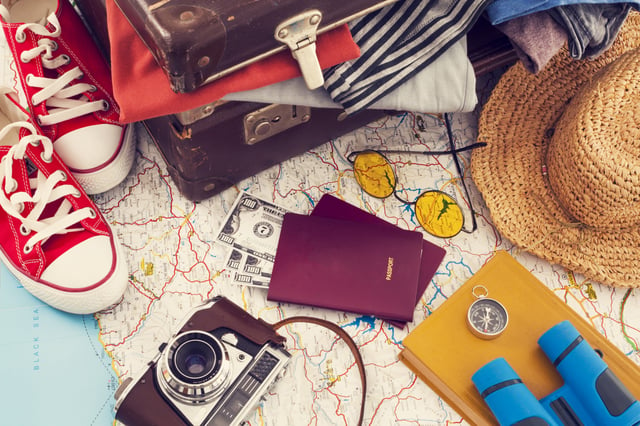Traveling with CPAP Doesn't Have to be Difficult!
The SleepWeaver Soft Cloth PAP masks are convenient and easy to pack for travel. Simply fold them up and place them in a carry on bag for ease of use while you are away. Pairing the SleepWeaver with the Transcend by Somnetics allows you to be compliant with therapy while traveling without taking up too much space during your trip.
Portable CPAP Options
There are two CPAP devices currently on the market that are specifically designed as “portable” devices. They have the advantages of being small and designed for travel, and feature a variety of battery and other charging options (such as solar panels). The portable devices—Transcend by Somnetics and the Z1 by Human Design Medical (HDM)—are available in both set pressure and autotitrating (APAP) models. They have the additional advantage of both having options for heat moisture exchange systems to preserve exhaled moisture. Disadvantages are a lack of battery-powered heated humidification and that a second CPAP (that is, one for home use and a portable CPAP for travel only) will not be covered by insurance. For patients who need bilevel or servo-ventilation (also known as adaptive servo-ventilation or ASV) therapy, there are not any specifically portable-sized machines on the market yet, so those users will need to bring their standard-sized device with them.
Battery Power Options
Going camping, traveling by RV, or flying can mean running the CPAP on battery. Honestly, being prepared with backup power even when at home is a good idea in case of an unexpected power outage. Battery power systems can be set up for bilevel and ASV devices, in addition to the more common CPAP and APAP devices.
Running CPAP from a Vechicle's Battery
For road trips in a personal vehicle, powering CPAP via battery power from an in-vehicle 12-V outlet is an option. The two portable CPAP devices mentioned above come ready to run off 12-V in-vehicle outlets, and several other CPAP manufacturers have 12-V power adapters available. Again, check with the specific CPAP manufacturer for exact specifications for an inverter and to determine needed watt capacity. Also, find out from the manufacturer if the device needs pure sine wave power or not. Most inverters sold create modified sine wave power.
Solutions for Cold Weather and High Altitude
Going camping with a CPAP may involve the mountains and/or cold weather. A ski trip can mean sleeping in a ski lodge that is located more than 10,000 feet above sea level. Many CPAP devices will automatically adjust for altitude up to 7,500 feet (which is the normal adjusted pressurization of an airliner); some will manually adjust up to 9,000 feet. Another potential issue to consider when camping is CPAP-induced hypothermia. When a person sleeps in temperatures below about 45oF, the air circulated through the CPAP can overwhelm the body’s ability to warm it, resulting in a lowering of core body temperature.
Flying with CPAP
Since a CPAP is a medical device, it is exempt from carry-on baggage restrictions on most airlines. It will go through special screening at the TSA checkpoint prior to being allowed on board. Most travelers with CPAP prefer to take the device as a carry-on item, rather than risk losing it in checked baggage. Whether to bring distilled water through the security checkpoint is a debated point among frequent travelers (more on distilled water in the next section). TSA Special Procedures outlines the exemptions for medically required liquids.
Using the CPAP in flight will require additional research on the particular airline. Some airlines, like American Airlines, require 48 hours advance notice. If you do not have either a portable CPAP with battery or a battery setup, you will need to discuss power options available and seating requirements of the airplane. A copy of your doctor’s prescription and a copy of the FAA approval letter for in-flight use of your make and model CPAP may be needed. These letters are available through CPAP manufacturers’ websites.
References:
1. Stanton, B. Traveling with CPAP-Yes You Can. Sleep Review. Retrived from: http://www.sleepreviewmag.com/2016/07/traveling-cpap-yes/







